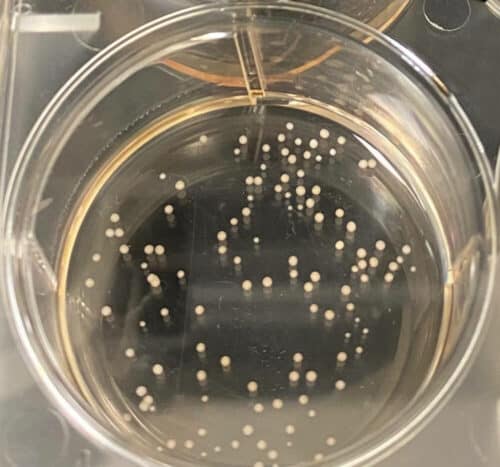Researchers from John Hopkins University aim to get a new perception of how chemicals and drugs affect the functioning of the human brain by using mini EEG caps to monitor the Organoid brain model

A team from John Hopkins University developed mini EEG electrodes inspired by electrode-dotted skull caps used for detecting brain tumors. Since, the conventional method of recording EEG signals using microelectrode array plates is flat while brain organoids are spherical in shape, this constrains a proper recording of brain organoid functions. To overcome this problem, researchers used self-folding polymer leaflets with conductive polymer-coated metal electrodes to form tiny EEG caps.
“If you record from a flat plane, you only get recordings from the bottom of a 3D organoid sphere. However, the organoid is not just a homogeneous sphere,” said first author Qi Huang, a Ph.D. Candidate in Chemical & Biomolecular Engineering. “There are neuron cells that communicate with each other that’s why we need a spatial-temporal mapping of it.”
Organoids are tiny 3-dimensional cell structures derived from stem cells that were invented a decade ago to study how they modify to viruses or exposed to chemicals by comparing them with unaltered organoids. This new microcap could allow researchers to take 3D recordings from the entire surface of organoids and is adjustable to the size of the organoids. The comprehensive information will help us to understand the functioning of brains and also help us to monitor neuron communication at the time of drug testing.
“This provides an important tool to understand the development and workings of the human brain,” said David Gracias, a Johns Hopkins chemical and biomolecular engineer and one of the creators. “Creating micro-instrumentation for mini-organs is challenging, but this invention is fundamental to new research.”
Researchers expect this invention would save a number of animals needed to test chemical effects and would make conventional drug and chemical testing inexpensive. As Traditional testing of just one chemical requires about 1,000 rats and costs about $1 million, Hartung said. The results from organoids are also more germane, he added, because human brains are very different from rat and mice brains.
Click here for the published Research Paper








